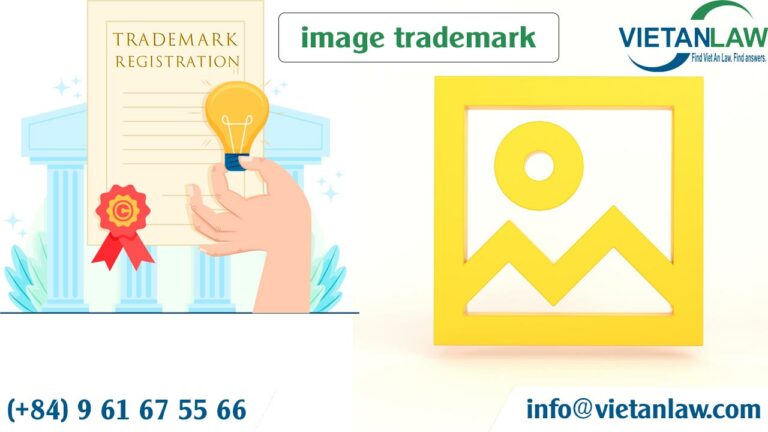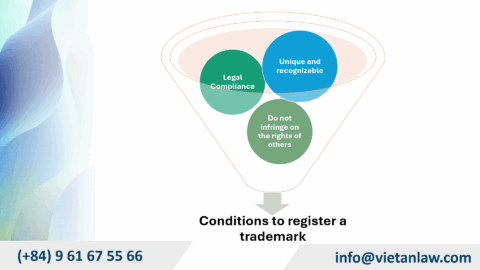When registering a trademark in the form of a figure, the trademark owner must carry out specific classification according to class, division, and section according to the Vienna Agreement before proceeding with trademark registration. This helps the examination of graphic trademarks of different countries to avoid conflicts with each other or omissions or discrepancies due to inconsistencies in how to look up trademarks with a graphic part during the trademark examination process. However, in reality, many clients have difficulty understanding the contents of the graphic trademark classification. Viet An Law Firm hereby would like to present an article on the classification of image trademark in Vietnam.

Trademark is an internationally standardized term. The laws of most countries in the world define trademarks based on the specific conditions and circumstances of that country, so there are differences. As a developing country, Vietnamese lawmakers have absorbed the experience of developed countries to introduce a general concept: “A trademark is a sign used to distinguish goods and services of different organizations and individuals”.
An image trademark is a type of trademark that uses pictorial signs and images to distinguish goods and services of different organizations and individuals. Image trademarks are highly aesthetic, show creativity, and are easy to remember for consumers.
The international classification of figurative elements in trademarks was established under the Vienna Agreement to simplify and unify the examination of figurative elements in trademarks globally.
The classification table helps appraisers perform the most accurate research of figurative trademarks to ensure accurate trademark examination, avoiding missing registered trademarks that are identical or similar to registered trademarks as previously filed for protection.
The purpose of the Classification is essentially practical, to promote anticipated trademark searches and avoid the need for reclassification when documents are exchanged internationally. Furthermore, it is no longer necessary for countries participating in the Vienna Agreement to draft their own National Classification or to update an existing Classification. In other words, the benefits of the Vienna Classification can be listed as follows:
The classification forms a hierarchical system, starting from the general to the concrete, divided all the elements form:
| CLASS 1 | Celestial bodies, natural phenomena, geographical maps |
| CLASS 2 | Human beings |
| CLASS 3 | Animals |
| CLASS 4 | Supernatural, fabulous, fantastic or unidentifiable beings |
| CLASS 5 | Plants |
| CLASS 6 | Landscapes |
| CLASS 7 | Constructions, structures for advertisements, gates or barriers |
| CLASS 8 | Foodstuffs |
| CLASS 9 | Textiles, clothing, sewing accessories, headwear, foot wear |
| CLASS 10 | Tobacco, smokers’ requisites, matches, travel goods, fans, toilet articles |
| CLASS 11 | Household utensils |
| CLASS 12 | Furniture, sanitary íntallations |
| CLASS 13 | Lighting, wireless valves, heating, cooking or refrigerating equipment, washing machines, drying equipment |
| CLASS 14 | Ironmongery, tools, ladders |
| CLASS 15 | Machinery, motors, engines |
| CLASS 16 | Telecommunications, sound recording or reproduction, computers, photography, cinematography, optics |
| CLASS 17 | Horological instruments, jewelry, weights and measures |
| CLASS 18 | Transport, equipment for animals |
| CLASS 19 | Containers and packing, representations of miscellaneous products |
| CLASS 20 | Writing, drawing or painting materials, office requisites, stationery and booksellers’ goods |
| CLASS 21 | Games, toys, sporting articles, roundabouts |
| CLASS 22 | Musical instruments and their accessories, musical accessories, bells, pictures, sculptures |
| CLASS 23 | Arms, ammunition, armor |
| CLASS 24 | Heraldry, coins, emblems, symbols |
| CLASS 25 | Ornamental motifs, surfaces or backgrounds with ornaments |
| CLASS 26 | Geometrical figures and solids |
| CLASS 27 | Forms of writing, numerals |
| CLASS 28 | Inscriptions in various characters |
| CLASS 29 | Colors |
Each class, division, and section is assigned a number according to a special coding system. Each figure element in a section is represented by three digits: the first digit may be any number from 1 to 29, representing the class; the second digit can be any number from 1 to 19, representing the division; and the third digit can be any number from 1 to 30, representing the section.
Countries can use the National Classification at the same time as the Vienna Classification, either indirectly through internal legislation or directly using the Vienna Classification. The Vienna Classification applies to approximately 32 countries that are parties to the Vienna Agreement. In addition, the trademark offices of at least 30 countries other than the member countries of the Vienna Agreement, the International Bureau of WIPO, the African Intellectual Property Organization (OAPI), the Benelux Organization for Intellectual Property (BOIP) ) and the European Union’s Office for Harmonization of the Internal Market (OHIM) also use the Vienna classification.
Vietnam is one of the countries that is not a member of the Vienna Agreement but uses the Vienna Classification for trademark registration. Based on Notice 3191/TB -SHTT, from June 1, 2018, the National Office of Intellectual Property officially applies the international classification of visual elements of trademarks (according to the Vienna Agreement) – 8th edition to classify figurative elements of trademark applications.
Vietnamese table of the International Classification of Graphic Elements of Trademarks (translated from English published by the World Intellectual Property Organization), published by the National Office of Intellectual Property on its website of the Department of Intellectual Property and the electronic information portal of the Ministry of Science and Technology.
Looking up or recording the figurative elements of the mark is recorded in groups of 6 numbers, in the order of Class – Division – Section (each item will consist of 2 numbers). The lookup can be filled out in order, the searcher can proceed based on 2 numbers, 4 numbers, or 6 numbers. The more detailed it is, the closer the displayed results will be to the model. For example, a trademark has figurative elements when looked up as 04.05.01; 05.01.05; 05.01.16; 05.03.15.
In there:
04.05.01: Plants in human or animal form, combinations of polymorphic plants (anthropomorphic plants)
05.01.05: A tree or a bush
05.01.16: Stylized tree or bush
05.03.15: Two to four leaves
Users looking up trademarks according to the Vienna classification table on the WIPO Publish platform in Vietnam perform the following operations:
Or access from the homepage of the Intellectual Property Office Information Portal: users select “Vietnamese trademark lookup” on the main screen;
Looking up and using figurative elements plays an important part in determining the similarity between trademarks with figurative elements, especially trademarks that only have figurative elements because searching for marks using symbols is difficult. self is impossible. This is a trademark database that applicants need to pay attention to when searching by trademark form in addition to the list of goods/services along with the mark.
Vienna classification is one of the important factors for the development of intellectual property law in the world in general and in other countries in particular. Clients who need advice on image trademark classification, please contact Viet An Law Firm for the best support.




